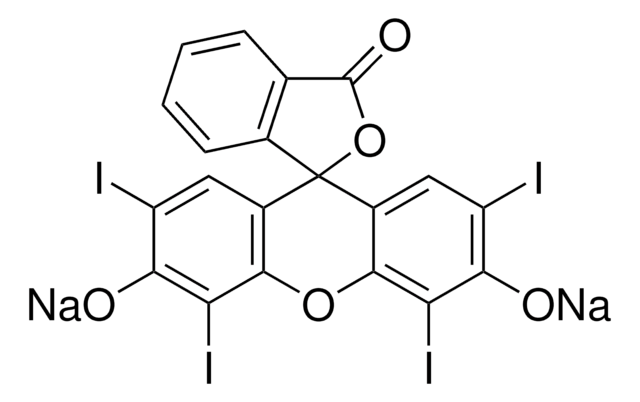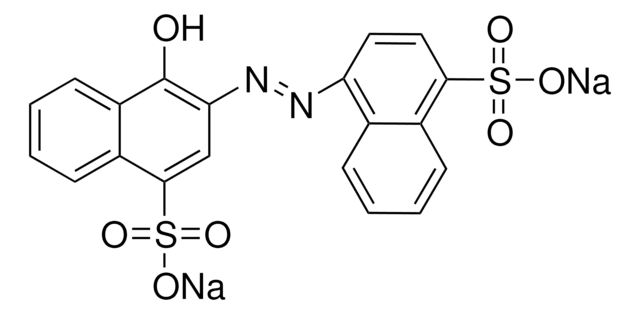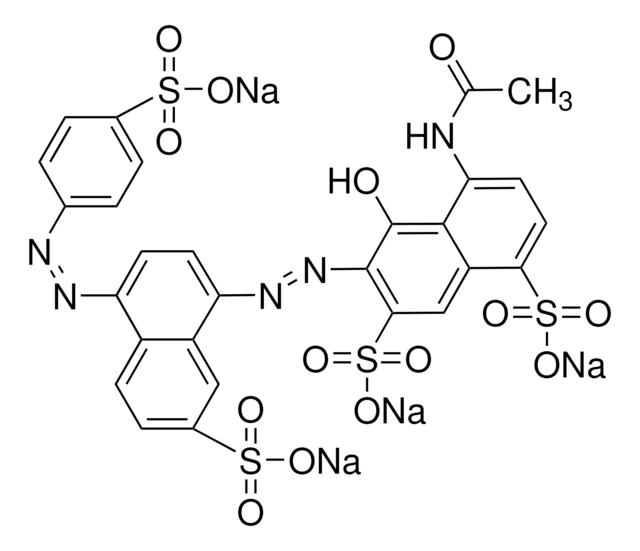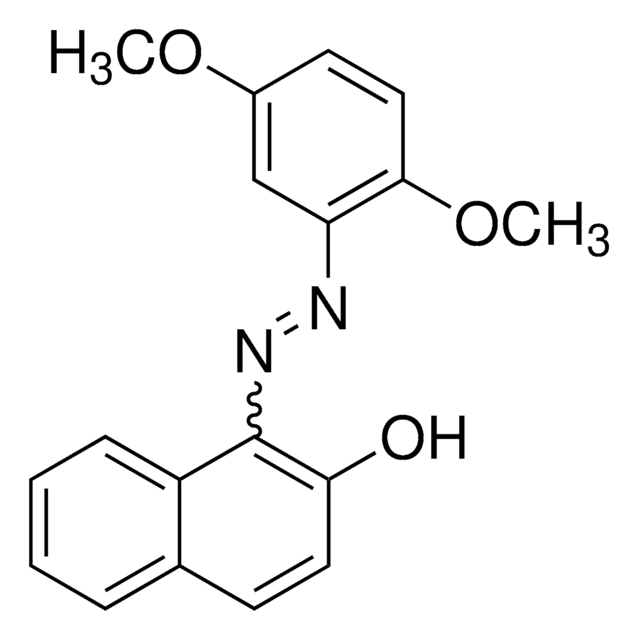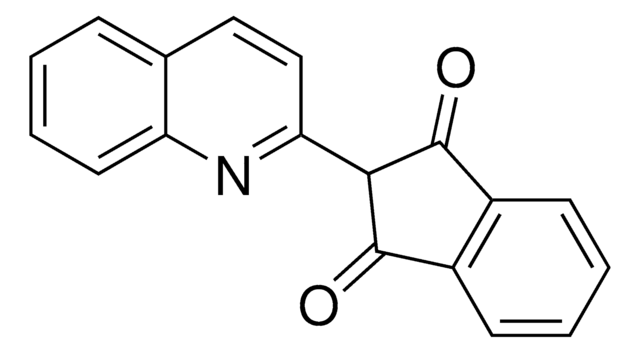68724
Fast Green FCF
analytical standard
Synonym(s):
Food green 3
About This Item
grade
analytical standard
Quality Level
Assay
≥98.0% (HPLC)
technique(s)
HPLC: suitable
gas chromatography (GC): suitable
mp
290 °C (dec.) (lit.)
application(s)
cleaning products
cosmetics
food and beverages
personal care
format
neat
SMILES string
[Na+].[Na+].CCN(Cc1cccc(c1)S([O-])(=O)=O)c2ccc(cc2)C(=C3/C=CC(\C=C3)=[N+](\CC)Cc4cccc(c4)S([O-])(=O)=O)\c5ccc(O)cc5S([O-])(=O)=O
InChI
1S/C37H36N2O10S3.2Na/c1-3-38(24-26-7-5-9-33(21-26)50(41,42)43)30-15-11-28(12-16-30)37(35-20-19-32(40)23-36(35)52(47,48)49)29-13-17-31(18-14-29)39(4-2)25-27-8-6-10-34(22-27)51(44,45)46;;/h5-23H,3-4,24-25H2,1-2H3,(H3,41,42,43,44,45,46,47,48,49);;/q;2*+1/p-2
InChI key
RZSYLLSAWYUBPE-UHFFFAOYSA-L
Looking for similar products? Visit Product Comparison Guide
General description
Application
Packaging
Signal Word
Warning
Hazard Statements
Precautionary Statements
Hazard Classifications
Muta. 2 - STOT SE 3
Target Organs
Respiratory system
Storage Class Code
11 - Combustible Solids
WGK
WGK 2
Flash Point(F)
352.4 °F - closed cup
Flash Point(C)
178 °C - closed cup
Choose from one of the most recent versions:
Already Own This Product?
Find documentation for the products that you have recently purchased in the Document Library.
Customers Also Viewed
Protocols
Separation of Tartrazine; Amaranth; Indigo carmine; New Coccine; Sunset Yellow FCF; Allura Red AC; Fast Green FCF; Erioglaucine disodium salt; Erythrosin B sodium salt; Phloxine B; Rose bengal
Our team of scientists has experience in all areas of research including Life Science, Material Science, Chemical Synthesis, Chromatography, Analytical and many others.
Contact Technical Service

